
Wall Street Meat
by
Andy Kessler
Published 17 Mar 2003
This was a nice piece of revisionist history, in an attempt by Ruvkun to selfinstall a backbone. So I sent an email to Frank (in Eliot Spitzer’s archives now, no doubt): To: Frank Quattrone From: Andy Kessler It must have been Rick Ruvkun’s shadow (the one he is still afraid of) that put out that Hold. Hang in there . . . Andy I was trying to be nice. Hey, maybe I did give a rat’s ass. Later that evening, I got an email back from Frank: 222 Spitzer Fixer To: Andy Kessler From: Frank Quattrone How about writing an article about how you pressured Bill Brady into taking Mediavision public? Now that was a low blow, but a well deserved one on my part.
…
West, 221 Valentine, Don, 169 Velocity Capital Management, 170–71, 180, 191–94 255 Index Venrock, 137 Vonderschmitt, Bernie, 94 Vortex, 214 Waddell and Read, 28 Wagner, Todd, 178 Wait, Jarett, 206–7 Wallach, Andrew, 11–12, 29, 162 Wall Street banking and, 91 casino metaphor, 147 how money is made on, 90–91 individual investors and, 237 IPOs and, 115 Wall Street Journal, 67, 112–13, 178, 222 Wasserman, Lew, 157 256 Weil, Ulrich, 25 Weill, Sandy, 216–17, 227 Wein, Byron, 111–12, 143, 153 Wellcome Trust, 143 White Weld, 14 Wilson, Fred, 203 Wilson, Pete, 62 Winnick, Gary, 213, 220 WorldCom, 1, 38, 219, 220, 226–27, 229 Xilinx, 94, 114–16 Yahoo, 169 Yamamoto, Takatoshi, 151 About the Author ANDY KESSLER worked on Wall Street for nearly twenty years as a research analyst, investment banker, venture capitalist, and hedge fund manager. He has written for the Wall Street Journal, Forbes, Thestreet.com, and the American Spectator, and appeared on CNBC, CNN, Nightline, and Dateline NBC. He lives in northern California with his wife and four sons. Visit www.AuthorTracker.com for exclusive information on your favorite HarperCollins author. Credits Designed by Amy Hill Copyright WALL STREET MEAT. Copyright © 2003, 2004 by Andy Kessler. All rights reserved under International and Pan-American Copyright Conventions.
…
My Narrow Escape from the Stock Market Grinder ANDY KESSLER For Nancy and the Boys Contents Foreword by Michael Lewis v Introduction 1 C HAPTER 1 Right 51% of the Time C HAPTER 2 Piranhas 19 C HAPTER 3 You’re in the Entertainment Business 41 C HAPTER 4 Bull Run 50 C HAPTER 5 Time to Get Serious 70 C HAPTER 6 Wheeling and Dealing at Morgan 88 C HAPTER 7 Up, then Tanked 114 C HAPTER 8 Kicking Off the ’90s 121 C HAPTER 9 Something about Mary 132 C HAPTER 10 Netscape IPO 165 C HAPTER 11 Quacking Ducks 172 C HAPTER 12 Price Targets as a Marketing Tool 181 C HAPTER 13 Synthetic Goldman Sachs 195 C HAPTER 14 The Ax Syndrome 209 C HAPTER 15 Spitzer Fixer 219 5 Afterword 233 Index 247 About the Author Credits Cover Copyright About the Publisher Foreword by Michael Lewis J ack Grubman, Frank Quattrone, Mary Meeker, and Henry Blodget, were Wall Street’s best-known promoters of the Internettelecom boom.
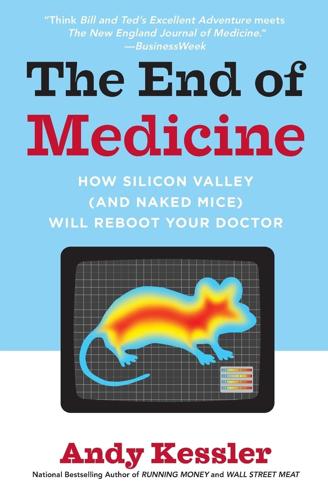
The End of Medicine: How Silicon Valley (And Naked Mice) Will Reboot Your Doctor
by
Andy Kessler
Published 12 Oct 2009
I couldn’t quite ask it that way, but in effect, that’s what I wanted to know. To: John Simpson From: Andy Kessler Subject: one question dr. simpson, we met on the soccer fields. that jean-claude is something else, he must have your genes. i have just one question for you. if imaging really does get cheap enough and we can find all this stuff that causes heart attacks and strokes, is there some device or procedure that will actually do preventative care, i.e. remove all that plaque before a heart attack or stroke? thanks, andy kessler From: John Simpson To: Andy Kessler Subject: Re: one question I am about to start a procedure but the short answer is “YES” (and you should learn how to use capital letters).
…
Chapter 44 To the Hutch I got an email from Don Listwin: To: Andy Kessler From: Don Listwin Subject: Hutch I’m heading up to the Hutch on Tuesday morning. If you want to join me, I’ll introduce to Lee and some of the other folks. Don I responded almost immediately. To: Don Listwin From: Andy Kessler Subject: Re: Hutch i’ve rearranged my tuesday so it turns out that now i am free, and can join you on your trip to the hutch. Just let me know what flight you are on and i’ll book tickets today. it may take a day or two, but i’ll have to find my tie in the back of my closet. andy The next day, I got this note: To: Andy Kessler From: Don Listwin Subject: Re: Re: Hutch Tail# N725CC out of San Jose. 9 a.m.
…
The End of Medicine HOW SILICON VALLEY (AND NAKED MICE) WILL REBOOT YOUR DOCTOR Andy Kessler To Nancy, my life sustainer Contents Introduction Chapter 1 Broken Neck? Chapter 2 Physical Part I Chapter 3 In the Cath Lab Chapter 4 What the Hell Am I Doing Here? Chapter 5 Echo/Nuclear Chapter 6 Do Doctors Scale? Chapter 7 Zap It Out Chapter 8 Blood Tests Chapter 9 CAVE Chapter 10 LASIK Chapter 11 The Big Three Chapter 12 Magic Pill Chapter 13 Meeting Gary Glazer Part II Chapter 14 The Dish Chapter 15 Close to Home Chapter 16 Cholesterol Conspiracy?
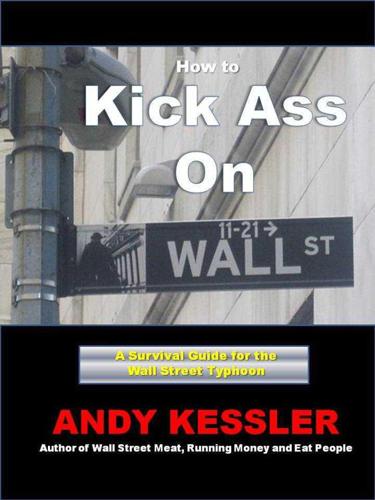
How to Kick Ass on Wall Street
by
Andy Kessler
Published 4 Jun 2012
How to Kick Ass On Wall Street Andy Kessler Author of Wall Street Meat, Running Money and Eat People Copyright © 2012 by Andy Kessler All rights reserved, including the right of reproduction in whole or in part in any form. Escape Velocity Press www.andykessler.com Introduction All right! You got a job on Wall Street. Way to go. Welcome aboard. If history is any guide, you’re wicked smart, a great athlete and know somebody. Or any combo of the above. Don’t matter. You got the job. Feels good, right? When you got the offer, you were probably as pumped as Will Ferrell in Semi-Pro, “Yes!
…
Send me an email at akessler@velcap.com with KAWS or Kick Ass on Wall Street in the subject line and I’ll put you on my mailing list. Feedback is welcome, good or bad. I have a thick skin. And tell me what you’re doing, how you’re doing and how this helped. You can find most of the other stuff I’ve written at www.andykessler.com. Good luck and kick some ass on Wall Street. Andy Kessler

How We Got Here: A Slightly Irreverent History of Technology and Markets
by
Andy Kessler
Published 13 Jun 2005
t=andykessler20&o=1&p=8&l=as1&asins=0060840978&fc1=000000&=1&lc1=00 00ff&bc1=000000<1=_blank&IS2=1&f=ifr&bg1=ffffff&f=ifr ALSO BY ANDY KESSLER Wall Street Meat: Jack Grubman, Frank Quattrone, Mary Meeker, Henry Blodget and me Running Money: Hedge Fund Honchos, Monster Markets and My Hunt for the Big Score Coming in 2006: The End of Medicine: Tales of Naked Mice, 3D Guts and Rebooting Doctors How We Got Here A Silicon Valley and Wall Street Primer . A Slightly Irreverent History of Technology And Markets Andy Kessler Copyright © 2005 by Andy Kessler All rights reserved, including the right of reproduction in whole or in part in any form.
…
Standage, Tom, 1998, The Victorian Internet – The Remarkable Story of the Telegraph and the Nineteenth Century On-Line Pioneers, Berkeley Sylla, Richard, 1998, The First Great IPO, Financial History Magazine Issue, 64 Thurston, Robert, 1878, A History of the Growth of the Steam-Engine Weightman, Gavin, 2003, Signor Marconi’s Magic Box – The Most Remarkable Invention of the 19th Century and the Amateur Inventor Whose Genius Sparked a Revolution, Da Capo Press About the Author Andy Kessler is a former electrical engineer turned Wall Street analyst turned investment banker turned venture capitalist turned hedge fund manager turned writer and author. His book Wall Street Meat: Jack Grubman, Frank Quattrone, Mary Meeker, Henry Blodget and me was published in March of 2003. The follow on, Running Money: Hedge Fund Honchos, Monster Markets and My Hunt for the Big Score, was published by HarperCollins in September of 2004.
…
Andy is a frequent contributor to the Wall Street Journal op-ed page and has written for Forbes Magazine, Wired, the LA Times, and The American Spectator magazine as well as techcentralstation.com and thestreet.com websites. He has even written a piece of fiction for Slate - bet you can’t find it. Andy Kessler was co-founder and President of Velocity Capital Management, an investment firm based in Palo Alto, California, that provided funding for private and public technology and communications companies. Private investments included Real Networks, Inktomi, Alteon WebSystems, Centillium and Silicon Image.
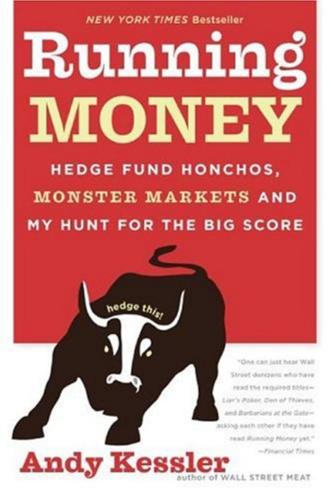
Running Money
by
Andy Kessler
Published 4 Jun 2007
See Internet Western Digital, 128 Whitaker Investments, 176 Whitney, Eli, 67 wide area networks, 188, 199 Wilkinson, John, 51–52, 56–57, 78, 101, 268 William Morris Agency, 196 Windows, 197, 247, 259, 274, 276, 277 Winnick, Gary, 183, 187, 290 Winstar, 179 Wintel, 265, 277 wireless technology, 179, 296 worker training, 122 World Bank, 264 WorldCom, 225, 290 Worldtalk, 106 Wozniak, Steve, 128 Wynn, Steve, 50 Xanadu, 118 Xerox PARC (Palo Alto Research Center), 118, 189, 190–91 Xilinx, 130, 131 Yahoo, 92, 93, 136, 143, 223, 247 Yamaichi, 160 Yamamoto, Takatoshi, 154–61 yen-carry trade, 162–65, 168, 292 Z80 home computer, 127 Zilog, 127 Zona, Hank, 131 Zoran, 96 About the Author Andy Kessler is the author of the book that rippled through the financial world, Wall Street Meat: My Narrow Escape from the Stock Market Grinder. He has written for the Wall Street Journal, Forbes, TheStreet.com and the American Spectator, and appeared on CNBC, CNN, Nightline and Dateline NBC. He lives in northern California. Visit www.AuthorTracker.com for exclusive information on your favorite HarperCollins author. ALSO BY ANDY KESSLER Wall Street Meat Credits Designed by Nancy Singer Copyright RUNNING MONEY. Copyright © 2004 by Andy Kessler. All rights reserved under International and Pan-American Copyright Conventions.
…
> > > Running Money > > > > Hedge Fund Honchos, Monster Markets and My Hunt for the Big Score > > > > > Andy Kessler For Nancy and our bookends, Kyle and Brett, and our books, Kur t and R yan > > > Contents Ssangyong Sweat 1 Part I Raising Funds 7 Part II Revolution 37 Part III Searching for Scale 87 Part IV Intellectual Property 115 Part V The Next Barrier 173 Part VI Burst 221 Part VII The Margin Surplus 231 Part VIII Epilogue 285 Acknowledgments 297 Index 299 About the Author Other Books by Andy Kessler Credits Cover Copyright About the Publisher > > > Ssangyong Sweat This market really sucks.
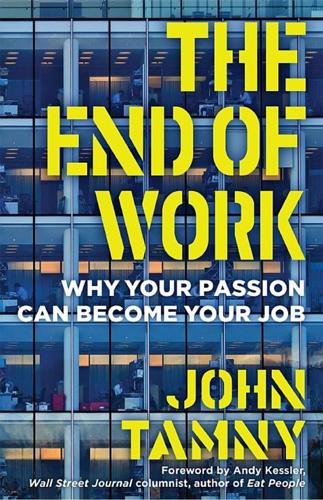
The End of Work: Why Your Passion Can Become Your Job
by
John Tamny
Published 6 May 2018
CONTENTS FOREWORD INTRODUCTION CHAPTER ONE Why College Football Players Should Major in College Football CHAPTER TWO Intelligence and Passion Don’t Stop at Football CHAPTER THREE Education Isn’t Meaningless, But It’s Grossly Overrated CHAPTER FOUR What Was Once Silly Is Now Serious CHAPTER FIVE Abundant Profits Make Possible the Work That Isn’t CHAPTER SIX The Millennial Generation Will Be the Richest Yet—Until the Next One CHAPTER SEVEN My Story CHAPTER EIGHT The “Venture Buyer” CHAPTER NINE Why We Need People with Money to Burn CHAPTER TEN Love Your Robot, Love Your Job CHAPTER ELEVEN Come Inside and Turn on the Xbox, You Have Work to Do ACKNOWLEDGMENTS NOTES FOREWORD Andy Kessler What do you do? We all get asked this at meetings, interviews, cocktail parties, everywhere. It’s almost as if the person asking is trying to put you in some cubby and figure out how you tick by branding you as a certain type of person, which magically unlocks the mystery to your personality.
…
Our productive lives become a blessing rather than a burden. And every one of us contributes, not just some self-selected elite. Wealth gets created for a wider and wider swath of workers, rather than distributed by policy wonks. Once you think, any job is possible. And it won’t feel like a job. Get ready for a life of adventure. Andy Kessler, the co-founder and former president of Velocity Capital Management, is the author of Eat People: And Other Unapologetic Rules for Game-Changing Entrepreneurs. INTRODUCTION “Man’s work begins with his job; his profession. Having a vocation is something of a miracle, like falling in love.”1 —Hyman Rickover In the fall of 2014, my wife and I attended a Fleetwood Mac concert in Washington, D.C.
…
Dvorak, “Apple should pull the plug on the iPhone,” MarketWatch, March 28, 2007, https://www.marketwatch.com/story/apple-should-pull-the-plug-on-the-iphone. 9.MacDailyNews, “RIM half-CEO doesn’t see threat from Apple’s iPhone,” February 12, 2007. 10.Gregory Korte, “Through executive orders, Obama tests power as purchaser-in-chief,” USA Today, October 11, 2015. 11.Andy Kessler, “Robots, 3-D Printers and Other Looming Innovations,” Wall Street Journal, August 7, 2013. 12.Stewart Wolpin, “Commercial GPS Turns 25: How the Unwanted Military Tech Found Its True Calling,” Mashable, May 25, 2014. 13.Steven F. Hayward, The Age of Reagan: The Fall of the Old Liberal Order (Roseville, Calif.: Forum, 2001), 290. 14.Ibid., 7. 15.

The Greed Merchants: How the Investment Banks Exploited the System
by
Philip Augar
Published 20 Apr 2005
A class action complaint on behalf of investors in WorldCom Inc., America’s second largest long-distance telecommunications carrier before it went bankrupt in July 2002,37 alleged how spinning worked: ‘Since 1996, Salomon repeatedly allocated thousands of hot IPO shares to the same top executives of the same telecommunications companies. In return, these executives, who were all in the position to determine or influence the selection of their company’s financial advisers or underwriters, repeatedly directed to Salomon investment banking business worth many millions of dollars.’38 Laddering was a variation on the theme. Andy Kessler, a former investment analyst and hedge fund manager, explained how it worked: ‘Fund managers promised to buy more IPO shares in the open market on the first day of an IPO to ladder the deal, causing or perhaps just perpetuating the first day pop in the share price.’39 As their losses mounted and details emerged of the investment banks’ duplicity, the investing public got very angry.
…
But history shows that it pays to be sceptical with the investment banks. Indeed one of the handful of top executives at one of America’s leading investment banks told me: ‘Going forward, Spitzer’s reforms will turn out a complete failure. He could have gone for structure but didn’t. Keeping Spitzer away from the model was an extraordinary management achievement.’7 Andy Kessler, the former analyst and fund manager, was equally forthright: ‘It seems to me that Wall Street management reached into the pockets of their shareholders and paid big fines so they could keep the status quo.’8 The survival of integration beyond the global settlement, the role it played in the scandals during the last years of the twentieth century and the potential it leaves for future problems therefore make it essential to understand fully how it works.
…
Naive, foolish, cynical or greedy analysts had talked the market up at a time when cool, clear, conflict-free thinking might have prevented the excesses. If ever a group of professionals missed a chance to justify their existence and compensation, this was surely it. The investment bankers must also bear some responsibility. They brought many companies to the market that lacked a track record or a viable business plan. Andy Kessler, who moved from Morgan Stanley’s research department to the venture capital industry on the West Coast, believed that the investment bankers lowered their standards after the Netscape IPO of 1995: ‘Investment bankers used to insist on two consecutive quarters of profits before taking a company public.
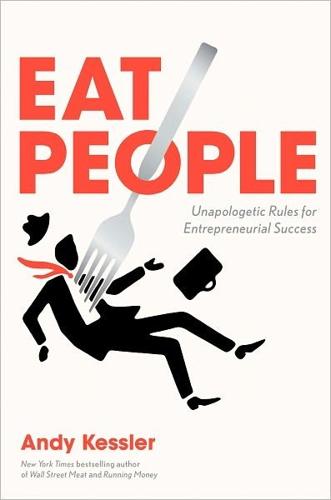
Eat People: And Other Unapologetic Rules for Game-Changing Entrepreneurs
by
Andy Kessler
Published 1 Feb 2011
Stephen’s Green, Dublin 2, Ireland (a division of Penguin Books Ltd); Penguin Books Australia Ltd, 250 Camberwell Road, Camberwell, Victoria 3124, Australia (a division of Pearson Australia Group Pty Ltd); Penguin Books India Pvt Ltd, 11 Community Centre, Panchsheel Park, New Delhi – 110 017, India; Penguin Group (NZ), 67 Apollo Drive, Rosedale, North Shore 0632, New Zealand (a division of Pearson New Zealand Ltd); Penguin Books (South Africa) (Pty) Ltd, 24 Sturdee Avenue, Rosebank, Johannesburg 2196, South Africa Penguin Books Ltd, Registered Offices: 80 Strand, London WC2R ORL, England First published in 2011 by Portfolio / Penguin, a member of Penguin Group (USA) Inc. Copyright © Andy Kessler, 2011 All rights reserved LIBRARY OF CONGRESS CATALOGING IN PUBLICATION DATA Kessler, Andy. Eat people : unapologetic rules for entrepreneurial success / Andy Kessler. p. cm. Includes index. eISBN : 978-1-101-47562-1 1. Entrepreneurship. 2. Technological innovations—Economic aspects. 3. New products. 4. Value. 5. Economics. I. Title. HB615.K396 2011 658.4’09—dc22 2010039727 Set in Minion Without limiting the rights under copyright reserved above, no part of this publication may be reproduced, stored in or introduced into a retrieval system, or transmitted, in any form or by any means (electronic, mechanical, photocopying, recording or otherwise), without the prior written permission of both the copyright owner and the above publisher of this book.

The Glass Cage: Automation and Us
by
Nicholas Carr
Published 28 Sep 2014
He pointed to aviation as an example: “A computerized brain known as the autopilot can fly a 787 jet unaided, but irrationally we place human pilots in the cockpit to babysit the autopilot ‘just in case.’ ”1 The news that a person was driving the Google car that crashed in 2011 prompted a writer at a prominent technology blog to exclaim, “More robo-drivers!”2 Commenting on the struggles of Chicago’s public schools, Wall Street Journal writer Andy Kessler remarked, only half-jokingly, “Why not forget the teachers and issue all 404,151 students an iPad or Android tablet?”3 In a 2012 essay, the respected Silicon Valley venture capitalist Vinod Khosla suggested that health care will be much improved when medical software—which he dubs “Doctor Algorithm”—goes from assisting primary-care physicians in making diagnoses to replacing the doctors entirely.
…
Chapter Seven: AUTOMATION FOR THE PEOPLE 1.Kevin Kelly, “Better than Human: Why Robots Will—and Must—Take Our Jobs,” Wired, January 2013. 2.Jay Yarow, “Human Driver Crashes Google’s Self Driving Car,” Business Insider, August 5, 2011, businessinsider.com/googles-self-driving-cars-get-in-their-first-accident-2011-8. 3.Andy Kessler, “Professors Are About to Get an Online Education,” Wall Street Journal, June 3, 2013. 4.Vinod Khosla, “Do We Need Doctors or Algorithms?,” TechCrunch, January 10, 2012, techcrunch.com/2012/01/10/doctors-or-algorithms. 5.Gerald Traufetter, “The Computer vs. the Captain: Will Increasing Automation Make Jets Less Safe?
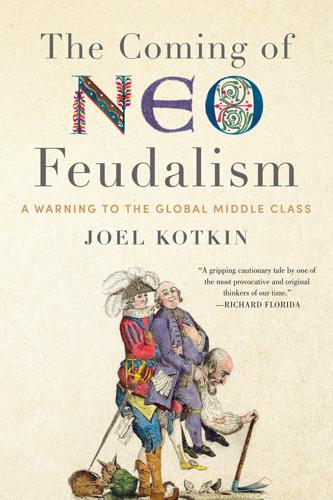
The Coming of Neo-Feudalism: A Warning to the Global Middle Class
by
Joel Kotkin
Published 11 May 2020
.: Belknap/Harvard, 2014), 174; “Richest people in the world,” CBS News, https://www.cbsnews.com/pictures/richest-people-in-world-forbes/12/. 12 Carter Coudriet, “13 Under 40: Here Are The Youngest Billionaires On The Forbes 400 2019,” Forbes, October 31, 2019, https://www.forbes.com/sites/cartercoudriet/2019/10/02/forbes-400-youngest-under-40-zuckerberg-spiegel/#7fd35f5a5a0e. 13 Sally French, “China has 9 of the world’s 20 biggest companies,” Market Watch, May 31, 2018, https://www.marketwatch.com/story/china-has-9-of-the-worlds-20-biggest-tech-companies-2018-05-31. 14 Farhad Manjoo, “Tech’s ‘Frightful 5’ Will Dominate Digital Life for Foreseeable Future,” New York Times, January 20, 2016, https://www.nytimes.com/2016/01/21/technology/techs-frightful-5-will-dominate-digital-life-for-foreseeable-future.html; Dana Mattioli, “Takeovers Roar to Life as Companies Hear Footsteps From Tech Giants,” Wall Street Journal, November 20, 2017, https://www.wsj.com/articles/takeovers-roar-to-life-as-companies-hear-footsteps-from-tech-giants-1511200327. 15 “Why startups are leaving Silicon Valley,” Economist, August 30, 2018, https://www.economist.com/leaders/2018/08/30/why-startups-are-leaving-silicon-valley; Rex Crum, “Let’s make a deal: SV150 firms spent $41 billion on acquisitions in 2016,” Mercury News, May 1, 2017, https://www.mercurynews.com/2017/05/01/lets-make-a-deal-acquisitions-were-all-over-the-sv150-in-2016/; “Too much of a good thing,” Economist, March 26, 2016, https://www.economist.com/brieing/2016/03/26/too-much-of-a-good-thing. 16 Christopher Mims, “Why Free Is Too High a Price for Facebook and Google,” Wall Street Journal, June 8, 2019, https://www.wsj.com/articles/why-free-is-too-high-a-price-for-facebook-and-google-11559966411; Andy Kessler, “Antitrust Can’t Catch Big Tech,” Wall Street Journal, September 14, 2019, https://www.wsj.com/articles/antitrust-cant-catch-big-tech-11568577387; David Dayen, “Trump’s Antitrust Cops Fail to Police Big Business—Again,” American Prospect, July 24, 2019, https://prospect.org/power/trump-s-antitrust-cops-fail-police-big-business-again/; Andrew Orlowski, “Google had Obama’s ear during antitrust probe,” Register, August 18, 2016, https://www.theregister.co.uk/2016/08/18/google_had_obamas_ear_on_antitrust_probe/. 17 Bryan Clark, “Facebook’s new ‘early bird’ spy tool is just tip of the iceberg,” Next Web, August 10, 2017, https://thenextweb.com/insider/2017/08/10/facebooks-new-early-bird-spy-tool-is-just-the-tip-of-the-iceberg/#; Betsy Morris and Deepa Seetharaman, “The New Copycats: How Facebook Squashes Competition from Startups,” Wall Street Journal, August 9, 2017, https://www.wsj.com/articles/the-new-copycats-how-facebook-squashes-competition-from-startups-1502293444. 18 Crunchbase, Google Acquisitions, updated January 15, 2020, https://wwwcrunchbase.com/organization/google/acquisitions/acquisitions_list#section-acquisitions; Ben Popper, “Failure is a feature: how Google stays sharp gobbling up startups,” The Verge, September 17, 2012, https://www.theverge.com/2012/9/17/3322854/google-startup-mergers-acquisitions-failure-is-a-feature; Tim Wu and Stuart A.
…
Wall Street Journal, October 3, 2018, https://www.wsj.com/articles/ben-franklin-who-1538608727; Colleen Flaherty, “The Vanishing History Major,” Inside Higher Ed, November 27, 2018, https://www.insidehighered.com/news/2018/11/27/new-analysis-history-major-data-says-ield-new-low-can-it-be-saved. 32 Henri Pirenne, Mohammed and Charlemagne (Cleveland: Meridian, 1957), 118; Roderick Seidenberg, Post-historic Man: An Inquiry (New York: Viking, 1974), 179. 33 Glenn Harlan Reynolds, “Robert Zubrin makes ‘The Case for Space,’” USA Today, May 7, 2019, https://www.usatoday.com/story/opinion/2019/05/07/spacex-blue-origin-virgin-galactic-robert-zubrin-case-space-column/1119446001/. 34 David Pilling, Bending Adversity: Japan and the Art of Survival (New York: Penguin, 2014), 119, 177–79; Karel van Wolferen, The Enigma of Japanese Power: People and Politics in a Stateless Nation (New York: Knopf, 1989), 2–3. 35 Andy Kessler, “Zuckerberg’s Opiate for the Masses,” Wall Street Journal, June 18, 2017, https://www.wsj.com/articles/zuckerbergs-opiate-for-the-masses-1497821885. 36 Catherine Clifford, “About half of Americans support giving residents up to $2000 a month when robots take their jobs,” CNBC, December 19, 2016, https://www.cnbc.com/2016/12/19/about-half-of-americans-support-giving-residents-up-to-2000-a-month-when-robots-take-our-jobs.html. 37 Patrick Hoare, “European Social Survey (ESS) reveal findings about attitudes toward Universal Basic Income across Europe,” Basic Income, January 20, 2018, https://basicincome.org/news/2018/01/europe-european-social-survey-ess-reveal-findings-attitudes-toward-universal-basic-income-across-europe/; Andrew Russell, “What Do Canadians think of basic income?
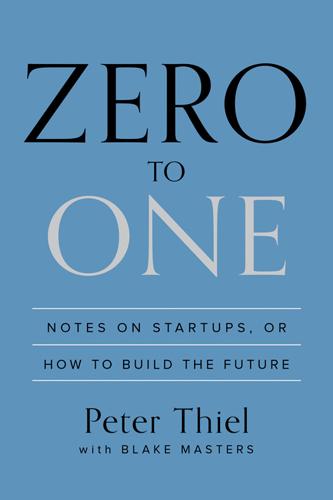
Zero to One: Notes on Startups, or How to Build the Future
by
Peter Thiel
and
Blake Masters
Published 15 Sep 2014
Dale Earnhardt Jr. needn’t feel threatened by them, but the Guardian worries (on behalf of the millions of chauffeurs and cabbies in the world) that self-driving cars “could drive the next wave of unemployment.” Everyone expects computers to do more in the future—so much more that some wonder: 30 years from now, will there be anything left for people to do? “Software is eating the world,” venture capitalist Marc Andreessen has announced with a tone of inevitability. VC Andy Kessler sounds almost gleeful when he explains that the best way to create productivity is “to get rid of people.” Forbes captured a more anxious attitude when it asked readers: Will a machine replace you? Futurists can seem like they hope the answer is yes. Luddites are so worried about being replaced that they would rather we stop building new technology altogether.

Automation and the Future of Work
by
Aaron Benanav
Published 3 Nov 2020
Among the many books coming out each year on the topic of automation, two recent titles stand out: Carl Benedikt Frey, The Technology Trap: Capital, Labor, and Power in the Age of Automation, Princeton, 2019; and Daniel Susskind, A World without Work: Technology, Automation, and How We Should Respond, Metropolitan, 2020. Arriving late in the wave of automation thinking, these books represent a pessimistic turn within the automation discourse. Frey does not think automation will necessarily generate a world without work, while Susskind does but disputes the viability of UBI as a solution. 8 Andy Kessler, “Zuckerberg’s Opiate for the Masses,” Wall Street Journal, June 18, 2017. 9 See, for example, Iain M. Banks, Look to Windward, Pocket Books, 2000; as well as his “Notes on the Culture,” collected in Banks, State of the Art, Night Shade Books, 2004. 10 See, respectively, Claire Cain Miller, “A Darker Theme in Obama’s Farewell: Automation Can Divide Us,” New York Times, January 12, 2017; Kessler, “Zuckerberg’s Opiate For the Masses”; Eduardo Porter, “Jobs Threatened by Machines: A Once ‘Stupid’ Concern Gains Respect,” New York Times, June 7, 2016; Kevin Roose, “His 2020 Campaign Message: The Robots Are Coming,” New York Times, February 12, 2018; Andrew Yang, The War on Normal People: The Truth about America’s Disappearing Jobs and Why Universal Basic Income Is Our Future, Hachette, 2018; Andy Stern, Raising the Floor: How a Universal Basic Income Can Renew Our Economy and Rebuild the American Dream, PublicAffairs, 2016. 11 Nick Srnicek and Alex Williams, Inventing the Future: Postcapitalism and a World without Work, Verso, 2015, p. 112. 12 Peter Frase, Four Futures: Life after Capitalism, Verso, 2016; Manu Saadia, Trekonomics: The Economics of Star Trek, Inkshares, 2016. 13 Srnicek and Williams, Inventing the Future, p. 127. 14 Aaron Bastani, Fully Automated Luxury Communism: A Manifesto, Verso, 2019. 15 Martin Ford argues that the pandemic will “change consumer preference and really open up new opportunities for automation,” as quoted in Zoe Thomas, “Coronavirus: Will Covid-19 speed up the use of robots to replace human workers?
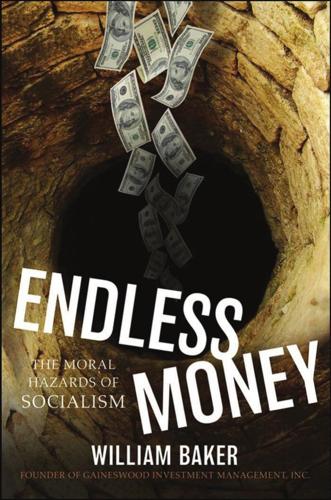
Endless Money: The Moral Hazards of Socialism
by
William Baker
and
Addison Wiggin
Published 2 Nov 2009
Many if not most may still be nationalized should the crisis worsen beyond the assumptions of the not-so-stressful “stress test” regulators conducted in early 2009. Here is where Limbaugh veers away from conservatism: He quotes former hedge fund manager and Morgan Stanley semiconductor analyst Andy Kessler, who projects that the U.S. government will profit by as much as $2.2 trillion from its ownership of mortgages and derivatives obtained through the GSEs and the TARP bailout facility. Kessler may indeed be correct, and he hints that this would happen because “. . . the Treasury and the Federal Reserve get to cheat . . . with lots of levers (they) can and will pump capital into the U.S. economy to get it moving again.
…
Information sourced from the CCH Standard Federal Tax Reporter, a Notes 12. 13. 14. 15. 16. 17. 391 Walters Kluwer business. http://dontmesswithtaxes.typepad.com/dont_mess_ with_taxes/2008/04/the-out-of-cont.html. Limbaugh, Rush, Who Do You Trust?, Opening Monologue: September 25, 2008, http://www.rushlimbaugh.com/home/daily/site_092508/content/ 01125108.guest.html. Ibid. Andy Kessler, “The Paulson Plan Will Make Money for Taxpayers,” Wall Street Journal, September 25, 2008, http://online.wsj.com/article/ SB122230704116773989.html?mod=googlenews_wsj. Rush, Limbaugh, Who Do You Trust?, Opening Monologue: September 25, 2008, http://www.rushlimbaugh.com/home/daily/site_092508/content/ 01125108.guest.html.

The Start-Up of You: Adapt to the Future, Invest in Yourself, and Transform Your Career
by
Reid Hoffman
and
Ben Casnocha
Published 14 Feb 2012
Consider the Social Security tax that comes out of your paycheck like you would a loan to a second cousin who has a drug problem—you might get paid back, but don’t count on it. 5. “Cost-Cutting Strategies in the Downturn: A Delicate Balancing Act,” May 2009, http://www.towerswatson.com/assets/pdf/610/CostCutting-RB_12–29–09.pdf 6. Andy Kessler, “Is Your Job an Endangered Species?” Wall Street Journal, February 17, 2011, http://online.wsj.com/article/SB10001424052748703439504576116340050218236.html 7. See the links in Will Wilkinson’s discussion, “Are ATMs Stealing Jobs?” The Economist, June 15, 2011, http://www.economist.com/blogs/democracyinamerica/2011/06/technology-and-unemployment 8.
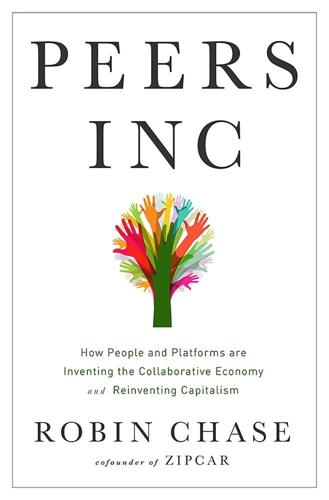
Peers Inc: How People and Platforms Are Inventing the Collaborative Economy and Reinventing Capitalism
by
Robin Chase
Published 14 May 2015
“Taxicab,” Wikipedia, http://en.wikipedia.org/wiki/Taxicab. 13. “Taxicabs of the United Kingdom,” Wikipedia, http://en.wikipedia.org/wiki/Taxicabs_of_the_United_Kingdom#cite_note-The_Knowledge-3. 14. Jeff Bercovici, “Uber’s Ratings Terrorize Drivers and Trick Riders. Why Not Fix Them?” Forbes.com, August 14, 2014. 15. Andy Kessler, “Brian Chesky: The ‘Sharing Economy’ and Its Enemies,” Wall Street Journal, January 17, 2014. 16. “Freelancing in America: A National Survey of the New Workforce,” 2014, independent study commissioned by the Freelancers Union and ElanceoDesk, http://chaoscc.ro/wp-content/uploads/2014/09/freelancinginamerica_report-1.pdf. 17.

The New New Thing: A Silicon Valley Story
by
Michael Lewis
Published 29 Sep 1999
"Hyperion is a beautiful boat," he said, and I knew when he said it what the next word would be. "But..." His finger traced the lines of his new boat, which was still no more than a figment of his imagination. Pure possibility. A smile lengthened across his face. Hyperion was nice, but this... this was the perfect boat. Page 269 Acknowledgments Andy Kessler and Fred Kittler introduced me to the Valley, and helped make this book what it is. Jim and Nancy Rutter Clark put up with a writer in ways that no one should have to. Clark has made a career of taking risks others avoid. He took another when he let me talk my way into his life, and I'll always be grateful for that.
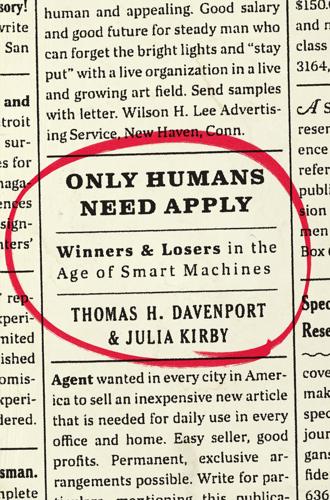
Only Humans Need Apply: Winners and Losers in the Age of Smart Machines
by
Thomas H. Davenport
and
Julia Kirby
Published 23 May 2016
Two More Fields, Same Five Steps Now that you’ve got a clear understanding of the difference in the five ways of stepping, let’s think about how they translate to a couple of other realms of knowledge work: teaching and financial advising. As we’ve already noted, teachers are threatened in their roles as personalized curriculum designers and transmitters of content; technology can do both of these functions quite well. While some rabble-rousers (notably Andy Kessler, a former hedge fund manager) argue that teachers will (and should) disappear with the rise of these technologies, it’s more likely that teachers’ roles will simply adapt. We’re inclined to believe Thomas Arnett, a researcher on innovation in education, who predicts technology will “automate tasks such as taking attendance, handing back assignments, and checking multiple choice or fill-in-the-blank answers on tests and quizzes”—and even that it will “take care of some basic instruction and give [teachers] real-time data for tailoring lessons to student needs”—but that many aspects of teaching will remain too vital and essentially human to be replaced.14 Teachers who step up in a technology-rich environment will, for example, do the big-picture planning of curriculum units, and the overall questions of what must be taught.

An Optimist's Tour of the Future
by
Mark Stevenson
Published 4 Dec 2010
Why is it that your sister always gets colds but you rarely do? Did Uncle Bob get heart disease due to one burger too many? Was it always written in his code? Or is he the victim of some yet unfound link between eating mustard sandwiches and working in a laundry? Why do some of us develop an allergy to latex? Why can a bee sting send skateboarding legend Andy Kessler into fatal cardiac arrest, but not me – and why is it the more times you’re stung, the more likely you are to develop a potentially fatal allergy? Or to put it another way, how does Keith Richards stay alive? At one end of the scale there are some conditions that are ‘in the genes.’ This is genetic determinism that’s as unforgiving as Richard Dawkins in a bible class.
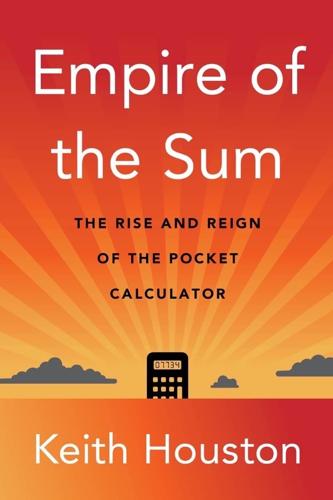
Empire of the Sum: The Rise and Reign of the Pocket Calculator
by
Keith Houston
Published 22 Aug 2023
Microprocessors and Busicom. 36 Ken Shirriff, “The Surprising Story of the First Microprocessors,” IEEE Spectrum 53, no. 9 (2016): 48–54, https://doi.org/10.1109/MSPEC.2016.7551353. 37 Aspray, “Intel 4004,” 8–9. 38 Berlin, Man Behind the Microchip, 185–186; Lojek, History of Semiconductor Engineering, 360. 39 Masatoshi Shima, “The 4004 CPU of My Youth,” IEEE Solid-State Circuits Magazine 1, no. 1 (2009): 41, https://doi.org/10.1109/MSSC.2008.930946. 40 Aspray, “Intel 4004,” 9. 41 Berlin, Man Behind the Microchip, 185–186. 42 Berlin, Man Behind the Microchip, 187–188; Faggin et al., “Oral History Panel on the Intel 4004,” 6–10. 43 Berlin, Man Behind the Microchip, 187–188; Faggin et al., “Oral History Panel,” 10. 44 Federico Faggin, “The Making of the First Microprocessor,” IEEE Solid-State Circuits Magazine 1, no. 1 (2009): 10–12, https://doi.org/10.1109/MSSC.2008.930938; Faggin et al., “Oral History Panel,” 10. 45 Faggin, “Making of the First Microprocessor,” 12. 46 Faggin, “Making of the First Microprocessor,” 13, 17. 47 Faggin, “Making of the First Microprocessor,” 14–15. 48 Faggin, “Making of the First Microprocessor,” 16; “MCS-4 Micro Computer Set Users Manual” (Santa Clara, CA: Intel, March 1973), 4. 49 “The Story of the Intel® 4004” (Santa Clara, CA: Intel), accessed October 8, 2021, https://www.intel.co.uk/content/www/uk/en/history/museum-story-of-intel-4004.html. 50 Faggin et al., “Oral History Panel,” 18–19. 51 “Busicom 141-PF,” IPSJ Computer Museum (Information Processing Society of Japan), accessed October 8, 2021, https://museum.ipsj.or.jp/en/heritage/Busicom_141-PF.html. 52 Andy Kessler, “The Chip That Changed the World,” Wall Street Journal, 2021, https://www.wsj.com/articles/the-chip-that-changed-the-world-microprocessor-computing-transistor-breakthrough-intel-11636903999; “Busicom Catalogue,” n.d., 11. 53 Fields et al., “U.S. Firms Gird for Calculator Battle,” 83. 54 Nicholas Valéry, “Shopping Around for a Calculator,” New Scientist, May 31, 1973, 549. 55 Gerald M.
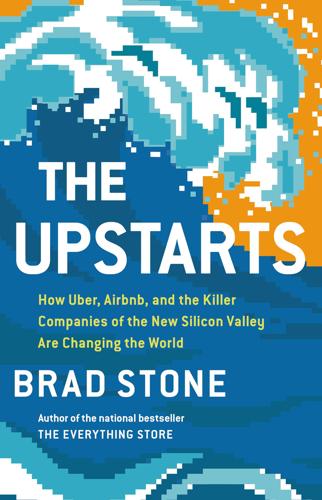
The Upstarts: How Uber, Airbnb, and the Killer Companies of the New Silicon Valley Are Changing the World
by
Brad Stone
Published 30 Jan 2017
“Disrupt Backstage: Travis Kalanick,” YouTube video, June 22, 2011, https://youtu.be/0-uiO-P9yEg. 2. Ilene Lelchuk, “Probe Clears 2 S.F. Elections Officials; Case Against 3rd Remains Unclear,” SFGate, December 12, 2001, http://www.sfgate.com/politics/article/Probe-clears-2-S-F-elections-officials-Case-2841381.php. 3. Andy Kessler, “Travis Kalanick: The Transportation Trustbuster,” Wall Street Journal, January 25, 2013, http://www.wsj.com/articles/SB10001424127887324235104578244231122376480. 4. “Disrupt Backstage: Travis Kalanick,” YouTube video. 5. “Travis Kalanick Startup Lessons from the Jam Pad—Tech Cocktail Startup Mixology,” YouTube video, May 5, 2011, https://youtu.be/VMvdvP02f-Y. 6.
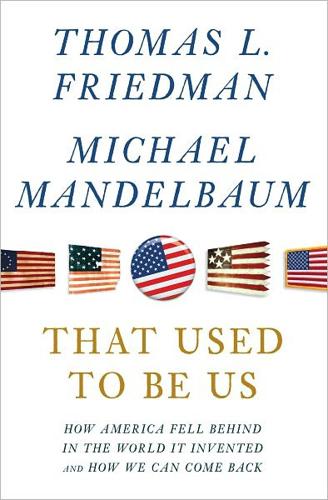
That Used to Be Us
by
Thomas L. Friedman
and
Michael Mandelbaum
Published 1 Sep 2011
But white- and blue-collar routine work shrinks, gets squeezed on pay, or just vanishes. The net result of the “rising demand for highly educated workers performing abstract tasks and for less-educated workers performing ‘manual’ or service tasks is the partial hollowing out or polarization of employment opportunities,” conclude Katz and Autor. Andy Kessler, a former hedge fund manager and the author of Eat People: And Other Unapologetic Rules for Game-Changing Entrepreneurs, published a piece in The Wall Street Journal (February 17, 2011) proposing an even simpler and more evocative typology of the new labor market: Forget blue-collar and white-collar.

The Facebook Effect
by
David Kirkpatrick
Published 19 Nov 2010
The CEO Page 166 “I want to stress the importance of being young”: Mark Coker, “Start-Up Advice For Entrepreneurs, From Y Combinator Startup School,” Venturebeat, March 26, 2007, http://venturebeat.com/2007/03/26/start-up-advice-for-entrepreneurs-from-y-combinator-start-up-school/ (accessed November 28, 2009). 169 But at the end of March, BusinessWeek’s online edition: Steve Rosenbush, “Facebook’s on the Block,” BusinessWeek, March 28, 2006, http://www.businessweek.com/technology/content/mar2006/tc20060327_215976.htm (accessed November 15, 2009). 170 But to Zuckerberg, what was more significant: Ibid. 171 Another imitator, which launched around the same time in China: Baloun, Inside Facebook, 95. 173 He also quoted a sociologist who speculated: Cassidy, “Me Media.” 174 who he had met while: Lacy, 162. 174 After some negotiation, Zuckerberg: Lacy, 162. 176 A week after the program launched: Rob Walker, “A For-Credit Course,” New York Times, September 30, 2007, http://www.nytimes.com/2007/09/30/magazine/30wwInconsumed-t.html (accessed December 27, 2009). 177 As part of the deal the ad giant: email from Brandee Barker, Facebook public relations, December 11, 2009. 9. 2006 Page 184 Peter Thiel, older but very sympathetic: Lacy, 165. 186 Some nights, unable to sleep: David Kushner, “The Baby Billionaires of Silicon Valley,” Rolling Stone, November 16, 2006, http://rollingstone.com/news/story/12286036/the_baby_billionaires_of_silicon_valley (accessed November 28, 2009). 186 “I hope he doesn’t sell it”: Kevin Colleran, interview with the author. 190 Within about three hours the group’s membership: Tracy Samantha Schmidt, “Inside the Backlash Against Facebook,” Time, September 6, 2006, www.time.com/time/nation/article/0,8599,1532225,00.html (accessed December 11, 2009). 190 And there were about five hundred other protest groups: Brandon Moore, “Student users say new Facebook feed borders on stalking,” Arizona Daily Wildcat, September 8, 2006, http://wildcat.arizona.edu/2.2257/student-users-say-new-facebook-feed-borders-on-stalking-1.177273 (accessed December 11, 2009). 190 “Chuck Norris come save us”: Layla Aslani, “Users Rebel Against Facebook Feature,” Michigan Daily, September 7, 2006, http://www.michigandaily.com/content/users-rebel-against-facebook-feature (accessed December 11, 2009). 190 “You shouldn’t be forced to have a Web log”: Moore, “Student Users.” 190 “I’m really creeped out”: Aslani, “Users Rebel.” 191 But Zuckerberg, in New York on a promotional trip: Andrew Kessler, “Weekend Interview with Facebook’s Mark Zuckerberg,” Wall Street Journal, March 24, 2007, http://www.andykessler.com/andy_kessler/2007/03/wsj_weekend_int.html (accessed December 11, 2009). 10. Privacy Page 200 As one expert in privacy law recently asked: James Grimmelmann, “Saving Facebook,” Iowa Law Review (2009), http://www.law.uiowa.edu/journals/ilr/Issue%20PDFs/ILR_94–4_Grimmelmann.pdf (accessed December 11, 2009). 201 “At every turn, it seems Facebook makes it more difficult”: Marc Rotenberg, “Online Friends At What Price?

The Future of Ideas: The Fate of the Commons in a Connected World
by
Lawrence Lessig
Published 14 Jul 2001
Thus, “the availability of a commons creates incentives that make possible decentralization of content-production.” Benkler, “The Commons,” 68. 8 “These units are so small as to make the transaction costs involved in negotiating allocation of exclusive property rights to them prohibitive.” Benkler, “Overcoming Agoraphobia,” 174. 9 See, e.g., Andy Kessler, velcap.com, “Steal This Bandwidth!,” e-mail on file with author, June 19, 2001 (“The FCC should set aside some not-for-profit spectrum specifically for wireless access, probably at the same time they auction 3G licenses, and keep encouraging the grassroots to run with new technology.”). 10 Telephone interview with Alex Lightman, January 31, 2001. 11 Ibid. 12 Telephone interview with Dave Hughes, November 13, 2000. 13 Federal Communications Commission, “Creation of Low Power Radio Service,” January 27, 2000, at http://www.fcc.gov/Bureaus/Mass_Media/Orders/2000/fcc00019.doc. 14 Harry First, “Property, Commons, and the First Amendment: Towards a Core Common Infrastructure” (White Paper of the First Amendment Program at the Brennan Center for Justice at New York University School of Law, 2001), 42-44. 15 Departments of Commerce, Justice, and State, the Judiciary and Related Agencies Appropriations Act, 2001, H.R. 4942, enacting into law H.R. 5548, 106th Congress, Title VI §632 (2000) (enacted). 16 See Bob Brewin, “Airports Ground Use of Wireless: Safety, Loss of Income from Pay Phones Cited,” Computerworld (February 19, 2001): 1, http://computerworld.com/ cwi/story/0,1199,NAV47_STO57817_NLTpm,00.html. 17 The real aim of the airports, organized under “wirelessairport.org,” appears to be to develop a proprietary, exclusive architecture for wireless technologies within airports, to permit them to extract rents from the technology's use. 18 See, e.g., Hazlett, “The Wireless Craze,” 42 (“The burden of proof is on the potential entrant.

Super Pumped: The Battle for Uber
by
Mike Isaac
Published 2 Sep 2019
Chapter 9: CHAMPION’S MINDSET 82 Kalanick once said onstage: Liz Gannes, “Travis Kalanick: Uber Is Raising More Money to Fight Lyft and the ‘Asshole’ Taxi Industry,” Recode, May 28, 2014, https://www.recode.net/2014/5/28/11627354/travis-kalanick-uber-is-raising-more-money-to-fight-lyft-and-the. 82 “There’s been so much corruption”: Andy Kessler, “Travis Kalanick: The Transportation Trustbuster,” Wall Street Journal, January 25, 2013, https://www.wsj.com/articles/SB10001424127887324235104578244231122376480. 83 “we’re crushing it”: Alexia Tsotsis, “Spotted! Secret Ubers on the Streets of Seattle,” TechCrunch, https://techcrunch.com/2011/07/25/uber-seattle/. 84 “incredibly hot chicks”: Adam Withnall, “Uber France Apologises for Sexist Promotion Offering Men Free Rides with ‘Incredibly Hot Chicks’ as Drivers,” Independent, October 23, 2014, https://www.independent.co.uk/life-style/gadgets-and-tech/uber-france-apologises-for-sexist-promotion-offering-men-free-rides-with-incredibly-hot-chicks-as-9813087.html. 87 “Could Uber reach a point”: Bill Gurley, “How to Miss by a Mile: An Alternative Look at Uber’s Potential Market Size,” Above the Crowd (blog), July 11, 2014, http://abovethecrowd.com/2014/07/11/how-to-miss-by-a-mile-an-alternative-look-at-ubers-potential-market-size/. 87 In a policy paper published: Travis Kalanick, “Principled Innovation: Addressing the Regulatory Ambiguity Ridesharing Apps,” April 12, 2013, http://www.benedelman.org/uber/uber-policy-whitepaper.pdf. 87 “nervous breakdowns”: Swisher, “Bonnie Kalanick.” 88 Kalanick would tweet: Travis Kalanick (@travisk), “@johnzimmer you’ve got a lot of catching up to do . . .

The Future of the Internet: And How to Stop It
by
Jonathan Zittrain
Published 27 May 2009
Netanel argues that the sorts of principle-based checks in most democracies, such as antidiscrimination principles and equality in the basic rights of citizenship, are not sustainable in an unregulated cyberspace environment. As applied in this case, Netanel’s argument might cast doubt on the net worth of “tricks” or technologies that seem to simultaneously promote democracy and undermine state sovereignty. See id. at 412—27 (discussing cyberpopulism); cf Andy Kessler, Network Solutions, WALL ST. J., Mar. 24, 2007, at A11 (describing the communities enabled by Facebook, in which user-specified preferences and privacy are carefully maintained in order to facilitate user openness). 90. LAWRENCE LESSIG, CODE: VERSION 2.0, 309 (2006). 91. In this case, the distinction is not between conduct rules and decision rules, but between conduct rules and enforcement.
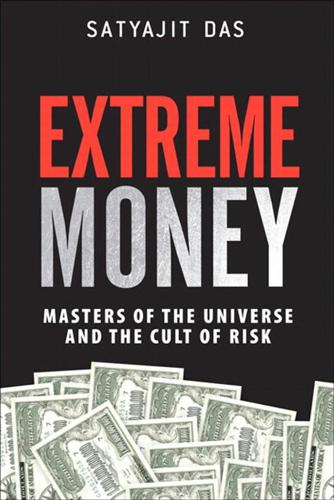
Extreme Money: Masters of the Universe and the Cult of Risk
by
Satyajit Das
Published 14 Oct 2011
The top five executives at Bear Stearns and Lehman pocketed cash bonuses exceeding $300 million and $150 million respectively (in 2009 U.S. dollars). Although the earnings on which the remuneration was based were reversed in 2008, the executives did not return the payments received.36 Salli Krawcheck, a former CFO at Citi, observed: “it’s better to be an investment bank employee than shareholder.”37 Andy Kessler, a former Wall Street research analyst, noted: “Wall Street is just a compensation scheme.... They literally exist to pay out half their revenue as compensation. And that’s what gets them into trouble every so often—it’s just a game of generating revenue, because the players know they will get half of it back.”38 There were crumbs from the bankers’ feast for all.
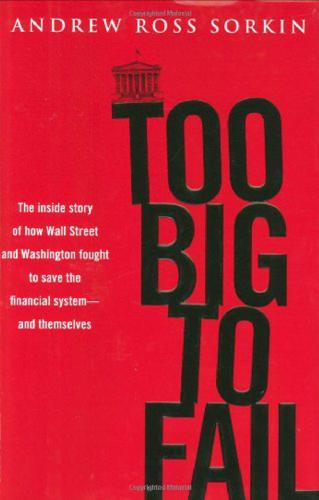
Too big to fail: the inside story of how Wall Street and Washington fought to save the financial system from crisis--and themselves
by
Andrew Ross Sorkin
Published 15 Oct 2009
“statutory resolution regime for nonbanks”: Ben Bernanke, “Reducing Systemic Risk,” Federal Reserve Bank of Kansas City’s Annual Economic Symposium,” Jackson Hole, Wyoming, August 22, 2008. Moody’s cuts its ratings: Jody Shenn, “Fannie, Freddie Preferred Stock Downgraded by Moody’s,” Bloomberg News, August 22, 2008. having shorted subprime before anyone else: Andy Kessler, “The Paulson Plan Will Make Money for Taxpayers,” Wall Street Journal, September 25, 2008. analyst report issued by Goldman Sachs raising questions about the firm: Hugh Son, “AIG Falls as Goldman Says a Capital Raise Is ‘Likely,’” Bloomberg News, August 19, 2008. As the company had warned in an SEC filing: Figures are from AIG’s 10-Q filing on August 6, 2008.